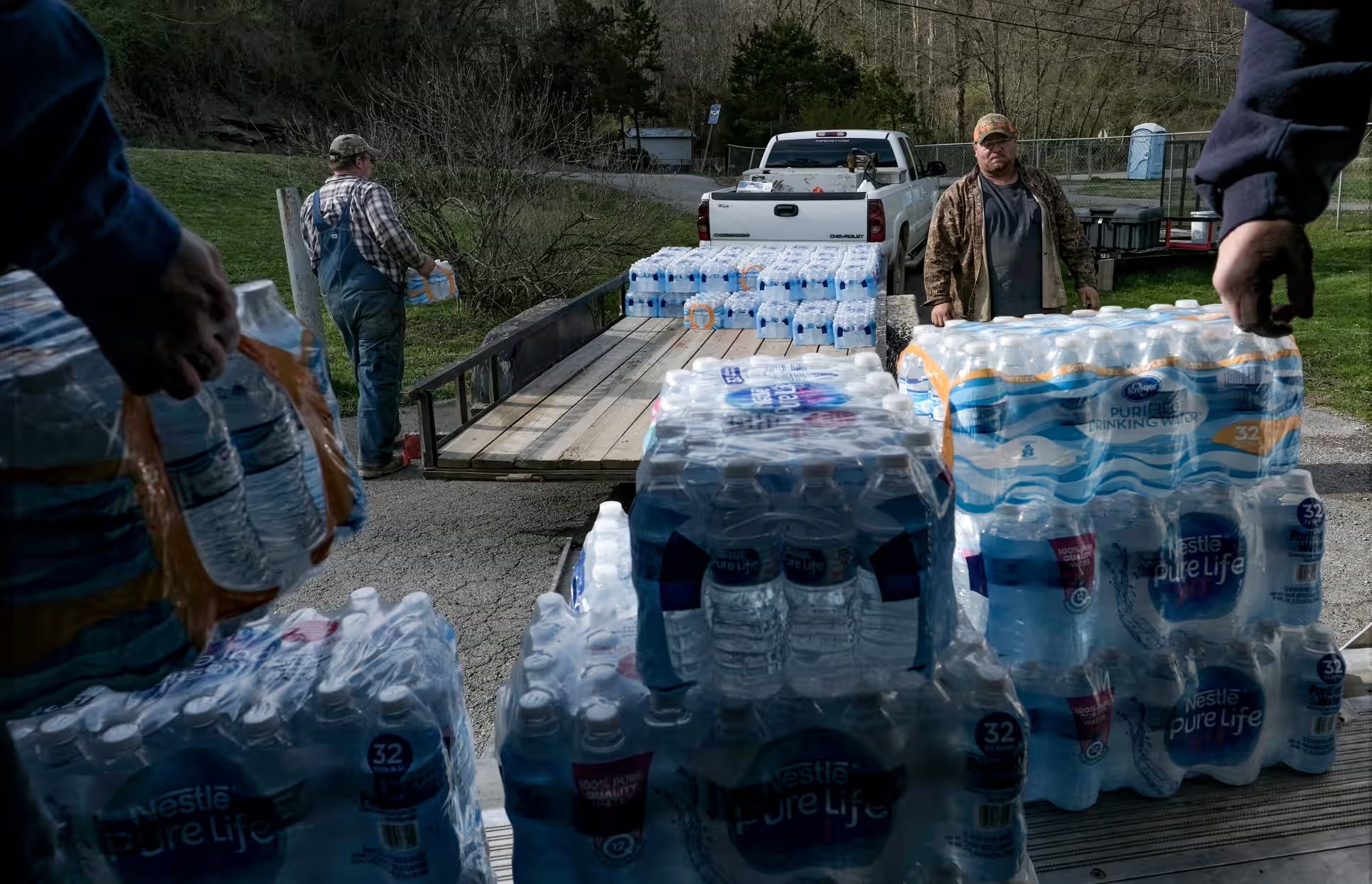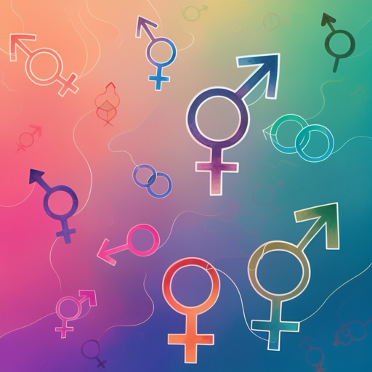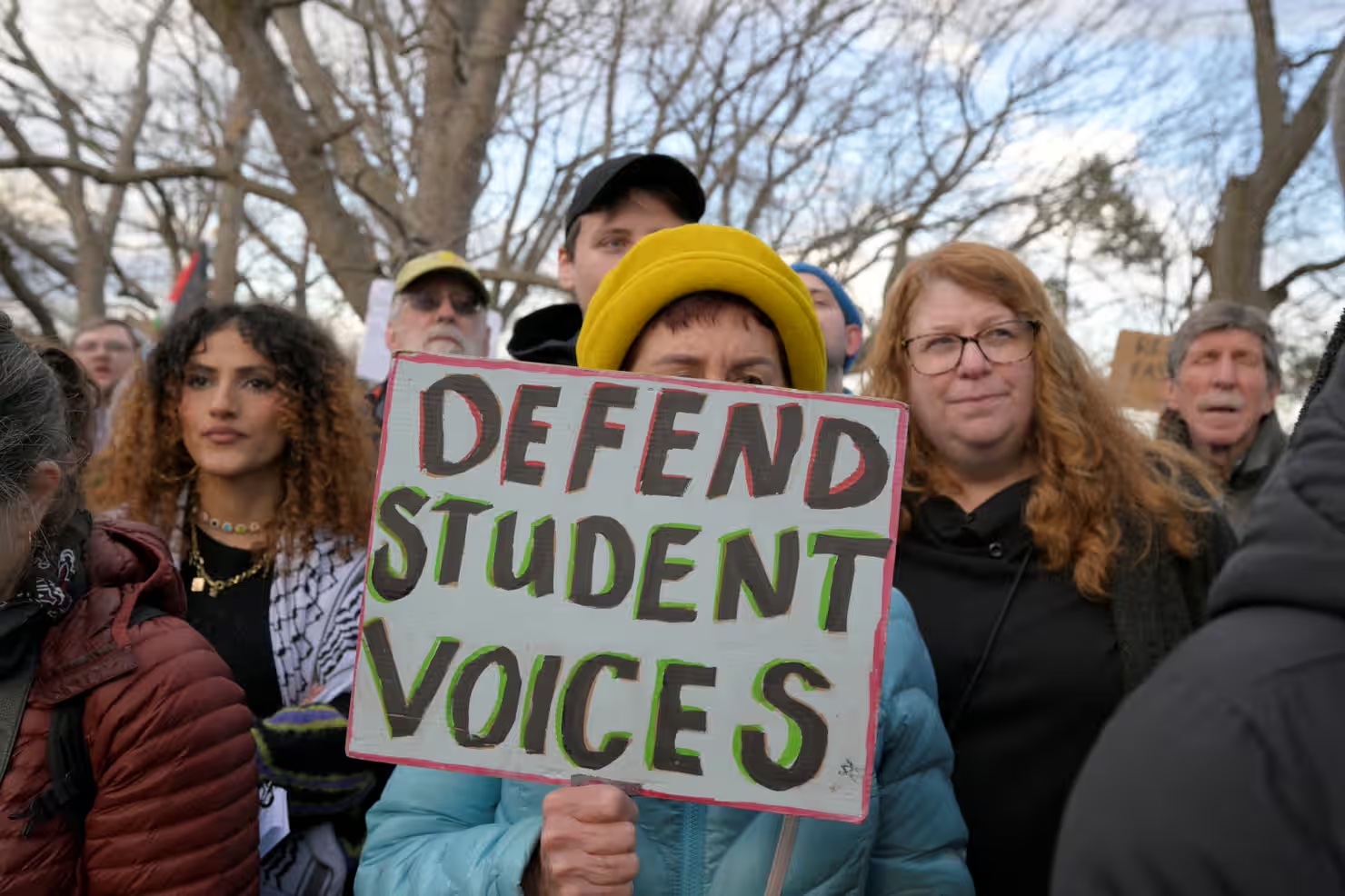Averi Aya-ay, Associate Member, Immigration and Human Rights Law Review

I. Introduction
The “human right to water,” which ensures access to “clean and affordable water,” has gained acceptance within the international community.[1] The United States has yet to federally recognize this right.[2] Federally recognized fundamental human right to clean and affordable water could help address the widespread lack of access to safe water in many U.S. communities.[3] One region particularly affected by the lack of water access and quality issues is Appalachia.[4] This blog explores the ongoing water crisis in the Appalachian region and examines how the formal recognition of the human right to clean water could lead to meaningful improvements. This blog first provides background on the Appalachian region and how it is uniquely vulnerable to lacking access to clean water. Second, it discusses how by ratifying international treaties, specifically The International Covenant on Civil and Political Rights (ICCPR) and The International Convention on the Elimination of All Forms of Racial Discrimination (ICERD), the United States is bound to uphold a right to water for its citizens. It also discusses how the right to water has become customary international law which also binds the United States. Thirdly, this blog explores how U.S. federal statutes like the Clean Water Act, the Safe Drinking Water Act, and a California state statute have created protections for safer and cleaner water. The final section concludes by discussing why the people of Appalachia need the United States to recognize a human right to water to safeguard their rights to clean and safe water. The ongoing water crisis in Appalachia represents a critical human rights violation, as many communities lack reliable access to clean and affordable water. To remedy this, the United States must formally recognize the human right to water at the federal level and implement enforceable legal standards that align with its international obligations and ensure equitable water access for all communities.
II. Background
Appalachia is demographically and ecologically distinct from the rest of the United States.[5] The Appalachian Region spans parts of thirteen states, including Alabama, Georgia, Kentucky, Maryland, Mississippi, New York, North Carolina, Ohio, Pennsylvania, South Carolina, Tennessee, and Virginia, and West Virginia.[6] The region has a population of 26.4 million residents.[7] With around forty-two percent of the population living in rural areas, Appalachia is one of the poorest regions in the country.[8] More than eighty-seven percent of its 420 counties have poverty rates exceeding one-and-a-half times the national average.[9] This region’s environment and public health have suffered significantly from extensive coal mining, chemical manufacturing, and natural gas production.[10]
Central Appalachia is also uniquely vulnerable to flooding.[11] Central Appalachia is prone to some of the most significant rainfall totals in the world over short periods of less than six hours.[12] This is mainly caused by small drainages and orographic thunderstorms, which form when air is lifted by mountains or hillsides.[13] These systems are notorious for delivering intense rainfall and causing destructive flooding.[14] Many communities in Central Appalachia are clustered in valleys, with minimal flat land, making these areas especially prone to flooding.[15] The extractive industries in Central Appalachia like mining have also taken away natural barriers to flooding by removing trees, topsoil, and rock.[16] This contributes to erosion, which can exasperate runoff and flooding.[17] Flooding affects water quality by transporting chemicals and pollutants that can contaminate household and community water systems.[18] In cases of extreme precipitation, drinking water treatment plants are typically flooded first and may also lose power, affecting water treatment service.[19]
While international law affirms the right to water, federal law in the United States has yet to recognize this right. The persistent water challenges in Appalachia highlight the critical need for federal acknowledgment to ensure meaningful access to clean and safe water.
III. Discussion
Although the United States has not formally recognized the human right to water, it is bound by international legal obligations and principles that affirm this right. This section explores how various international treaties—such as the International Covenant on Civil and Political Rights (ICCPR) and the International Convention on the Elimination of All Forms of Racial Discrimination (ICERD)—establish water as a fundamental right, and how customary international law reinforces these obligations. It also examines how U.S. federal and state laws, while addressing water quality, fall short of guaranteeing access to clean and affordable water as a legally enforceable human right.
A. International Treaties Recognize the Human Right to Water
Various international treaties recognize the human right to water.[20] The right has been further developed through general comments interpreting those treaties and established in a United Nations General Assembly resolution in 2010.[21] The ICCPR does not explicitly acknowledge a right to water, but Article 6(1) establishes an inherent right to life, which has been interpreted to include access to water as a necessity for sustaining life.[22] The ICCPR, as of February 2025, has been ratified by 174 parties.[23] The United States expressly ratified this treaty on June 8, 1992, meaning that the treaty has binding power.[24]
The ICERD requires that economic, social, and cultural rights be fulfilled non-discriminately.[25] This treaty, like the ICCPR, is also well accepted with 182 countries ratifying it as of March 2025.[26] The Committee on the Elimination of Racial Discrimination (CERD) has recognized the right to water as a component of both the right to housing and the right to the United States is a party to this treaty and has not made reservations to the rights to housing and health under ICERD.[27] This means that the United States consented to be bound by these international laws when they chose to ratify them.
B. Clean Water Under Customary International Law
The right to water is considered a norm of customary international law, which also binds the United States.[28] The American Declaration on the Rights and Duties of Man and the Universal Declaration of Human Rights implicitly recognizes the right to water as part of the right to life and an adequate standard of living.[29] Additionally, in 2010, the United Nations General Assembly and Human Rights Council recognized the human right to safe drinking water as a part of binding international law.[30] The United Nations recognizes access to water and sanitation as fundamental to human dignity and prosperity.[31]
C. Federal and Local Laws Promoting Aspects of the Right to Water in the United States
The Clean Water Act (1972) and the Safe Drinking Water Act (1974) both regulate water quality in public water systems, but neither fully recognize the right to clean drinking water.[32] Both of these federal laws are administered by the Environmental Protection Agency (EPA), which has established minimum standards for regulating water quality.[33] However, states are ultimately responsible for regulating their public drinking water systems.[34] California recognized a human right to water in 2012, while the federal government and other states have yet to do so.[35] California’s Water Code, Section 106.3, recognizes that “every human being has the right to safe, clean, affordable, and accessible water adequate for human consumption, cooking, and sanitary purposes.”[36]
While federal laws like the Clean Water Act and the Safe Drinking Water Act regulate water quality, they do not fully recognize the human right to water, leaving vulnerable regions like Appalachia without the legal framework necessary to ensure access to safe and reliable drinking water.
D. Why Appalachia Needs the U.S. Federal Government to Recognize the Right to Water
The United Nations and the state of California have recognized the human right to safe and affordable drinking water for over ten years.[37] However, in the United States access to safe drinking water is still not a reality nationwide.[38] Certain populations, such as those in rural areas like Appalachia, have significantly less access to clean and reliable drinking water than others.[39] Among those with access to utility-supplied water, rates of health-based violations of EPA drinking water regulations are highest in lower-income rural areas.[40] Central Appalachia is one of five regional clusters with the highest rates of violations, as well as reported incomplete plumbing, meaning some residents lack access to hot and cold running water.[41]
For instance, in southern West Virginia, many individuals lack access to clean running water and indoor plumbing.[42] In McDowell County, one of the nation’s poorest counties, residents must haul roadside water, collect rainwater, or spend their limited income on bottled water due to the lack of safe and reliable water and plumbing.[43] Many residents of McDowell County have been under boil-water advisories for years.[44] Locals rely on well water, but these wells are vulnerable to contamination and are costly to repair when damaged or contaminated.[45]
Central Appalachia is also an area rich in coal, which has been heavily mined.[46] Coal mining can have detrimental effects on the surrounding environment, especially water sources.[47] Mountaintop removal mining severely impacts water quality, and these effects can persist for decades after mining ends.[48] Additionally, coal mining can lead to acid mine drainage, resulting in highly acidic water containing toxic heavy metals that threaten wildlife and render polluted waterways unusable for drinking and recreation.[49]
Despite many communities, particularly in Appalachia, suffering from a lack of clean and reliable water sources, the United States has still not recognized a human right to water.[50] Since the United Nations recognized the human right to water, thirty-nine countries have enshrined this right in their legislation or constitutions.[51] Despite the United States ratifying international treaties that have been interpreted to include the human right to water, the country has refused to acknowledge any recognition of this right.[52] In 2019, a U.S. representative at the United Nations rejected a resolution recognizing the human right to water, arguing it was not essential to other human rights like the right to life.[53] For years, international human rights bodies, have expressed concerns that the U.S. is not meeting its obligations to ensure access to water and sanitation under international law.[54] It is difficult to compel the U.S. to uphold its legal obligations under international law because there is no central enforcement body with the authority to ensure compliance.[55] This is why federal recognition of the human right to water is essential. If the United States and individual states recognized the right to water, they would provide a legal mechanism for people to claim that right, compelling the government to respond.[56]
For instance, South Africa has codified the right to sufficient water in their constitution, allowing for its citizens with meaningful legal protections by creating a justiciable right that individuals can enforce through the courts.[57] For example, South Africa’s constitutional guarantee of the right to sufficient water prompted the Constitutional Court to hold that the government has a duty to provide water infrastructure as a component of securing safe and adequate housing.[58] This demonstrates how national recognition of water rights can allow citizens to demand accountability—an approach that could offer meaningful protections for underserved communities in Appalachia facing similar challenges.
IV. Conclusion
The human right to water, though widely recognized internationally, has yet to be formally acknowledged by the United States at the federal level. The recognition of this right could significantly address the ongoing water access and quality issues faced by many communities, especially in regions like Appalachia. By ratifying international treaties such as the ICCPR and ICERD, the United States is bound to uphold the right to water for its citizens. Additionally, the growing acceptance of this right as customary international law further strengthens the case for its recognition. Although federal laws like the Clean Water Act and Safe Drinking Water Act provide some protections, the creation of a state-level human right to water in California demonstrates the potential for more robust solutions. Recognizing the human right to water in the United States is crucial to ensuring that vulnerable communities, particularly in Appalachia, have access to clean, safe, and affordable water, ultimately fostering public health, economic stability, and social equity.
[1] Kevin Murray & Sara Kominers, The Human Right to Water in the United States: A Primer for Lawyers & Community Leaders, Northeastern University School of Law, https://law.northeastern.edu/wp-content/uploads/2021/04/phrge-water-primer.pdf [https://perma.cc/T5Z2-L8S4], at 1 (last visited Apr. 6, 2025).
[2] Id.
[3] Id.
[4] Jennifer Wies, “As long as We Have the Mine, We’ll Have Water”: Exploring Water Insecurity in Appalachia, 44 Annals of Anthropological Prac. 65, 66 (2020).
[5] About the Appalachian Region, Appalachian Reg’l Comm’n, https://www.arc.gov/about-the-appalachian-region/ [https://perma.cc/A2ZU-R65T] (last visited Apr. 6, 2025).
[6] Id.
[7] Id.
[8] Id.
[9] Id.
[10] Nicholas Stump, Appalachia Puts Environmental Human Rights to the Test, yes! Solutions Journalism (Jan. 17, 2018), https://www.yesmagazine.org/environment/2018/01/17/appalachia-puts-environmental-human-rights-to-the-test [https://perma.cc/SH4T-HYKA].
[11] Climate Change and Flooding in Central Appalachia, Pacific Institute (Nov. 2023), https://pacinst.org/wp-content/uploads/1989/11/Central-Appalachia-Issue-Brief_Final.pdf [https://perma.cc/XK2W-NZ7C], at 1.
[12] Id. at 3
[13] Id.
[14] Id.
[15] Id.
[16] Id.
[17] Id. at 4
[18] Id. at 6
[19] Id.
[20] Murray & Kominers, supra note 1.
[21] Id.
[22] Id.; International Covenant on Civil and Political Rights, Dec. 16, 1966, 999 U.N.T.S. 171 [hereinafter ICCPR].
[23] United Nations, Treaty Series, vol. 999, p. 171 and vol. 1057, p. 407 https://treaties.un.org/PAGES/ViewDetails.aspx?chapter=4&clang=_en&mtdsg_no=IV-4&src=TREATY [https://perma.cc/8S5U-AX4S].
[24] Id.
[25] Murray & Kominers, supra note 1; International Convention on the Elimination of All Forms of Racial Discrimination, Mar. 7, 1966, 660 U.N.T.S. 195, Art. 5(e) [hereinafter ICERD].
[26] Treaty Series, supra note 22.
[27] Id.
[28] Murray & Kominers, supra note 1, at 7.
[29] Id.; American Declaration of the Rights and Duties of Man, O.A.S. Res. XXX, Int’l Conf. of Am. States, 9th Conf., O.A.S. Doc. OEA/Ser.L/V/II.23, doc. 21 rev. 6 (1948); Universal Declaration of Human Rights, G.A. Res. 217A (III), U.N. Doc. A/810, at 71 (Dec. 10, 1948) [hereinafter UDHR].
[30] Human Rights to Water and Sanitation, UN, https://www.unwater.org/water-facts/human-rights-water-and-sanitation#:~:text=Access%20to%20water%20and%20sanitation,safely%20managed%20water%20and%20sanitation [https://perma.cc/VUH2-U6LE] (last visited Apr. 6, 2025).
[31] Id.
[32] Murray & Kominers, supra note 1; Clean Water Act, 33 U.S.C. § 1251 (2012); Safe Drinking Water Act, 42 U.S.C. § 300f (2012).
[33] Id.
[34] Id.
[35] Human Right to Water Portal, California State Water Res. Control Bd., https://www.waterboards.ca.gov/water_issues/programs/hr2w/ [https://perma.cc/2FEQ-Y2GZ] (last updated Feb. 4, 2025).
[36] Id.
[37] Id.
[38] Alasdair Cohen, Drinking Water Sources, Quality, and Associated Health Outcomes in Appalachian Virginia: A Risk Characterization Study in Two Counties, 260 Int. J. Hygiene & Env’T Health 1, 2 (2024).
[39] Id.
[40] Id.
[41] Id.
[42] Hannah Rappleye & Adiel Kaplan, ‘All the Water’s Bad’: In McDowell County, You Have to Get Creative to Find Safe Drinking Water, NBC News (June 17, 2021), https://www.nbcnews.com/science/environment/all-water-s-bad-mcdowell-county-you-have-get-creative-n1270405 [https://perma.cc/FUY7-QQ2K].
[43] Id.
[44] Id.
[45] Id.
[46] Id.
[47] Ellen Montgomery & Amelia English, How Coal Mining Harms the Environment, Env’t America Res. & Pol’y Ctr. (Aug. 23, 2024), https://environmentamerica.org/center/articles/how-coal-mining-harms-the-environment/.
[48] Id.
[49] Id.
[50] Mia DiFelice & Mary Grant, We Have a Right to Water. The U.S. Has Not Delivered, Food & Water Watch (Sep. 15, 2022), https://www.foodandwaterwatch.org/2022/09/15/we-have-a-right-to-water-the-u-s-has-not-delivered/ [https://perma.cc/LPA6-JJFH].
[51] Id.
[52] US: Advance Human Right to Safe, Affordable Water, Hum. Rts. Watch (Sept. 8, 2021), https://www.hrw.org/news/2021/09/08/us-advance-human-right-safe-affordable-water [https://perma.cc/98V5-29P8].
[53] Id.
[54] Id.
[55] Luana M. Denegre, The issue of Enforcement in International Law: A Case Study of the War in Ukraine, 46 Univ. of S.F. 1, 5, 9 (2022) (discussing the challenges of enforcing international law).
[56] DiFelice & Grant, supra note 50.
[57] Benjamin Meier et al., Implementing an evolving human right through water and sanitation policy, Water Pol’y 1, 11 (2013) (discussing South Africa’s constitutional codification of the right to sufficient water).
[58] Id.



